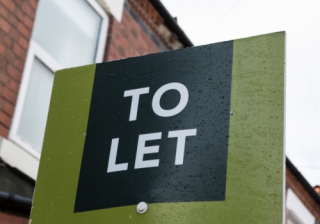
The government’s stamp duty holiday was first introduced in July 2020 and was withdrawn in two stages – June and September 2021. The new data reveals that at both withdrawal stages, the number of 35+ year mortgages sold increased considerably.
In June 2021, 35,046 mortgages were sold with a term of 35+ years, a staggering 209% increase compared with 11,320 in June 2020. In September 2021, 28,112 were sold, a 73% increase compared with 16,066 in September 2020.
Alongside the increase in the number of mortgages sold, the average house price rose rapidly throughout 2021. By the final withdrawal of the stamp duty holiday in September 2021, the average house price had reached £287,8951– an 11.8% increase compared to a year prior.
Many people will have viewed the stamp duty holiday as an opportunity to purchase a larger, more expensive house than they would otherwise have been able to. In order to secure an affordable mortgage on the property, the figures suggest many opted to take out a longer mortgage term than they otherwise would have. However, in doing so they will have committed to paying a higher level of interest over the duration of their mortgage.
Despite the savings on stamp duty, which could have been a maximum of £15,000 in the first stage and £2,500 in the second, entering a mortgage term of 35 or more years will be costly given the amount of interest that will be paid over the duration of the term.
The table below illustrates how the overall costs of a longer-term mortgage far outweigh the initial stamp duty saving.
Charlotte Nixon, mortgage expert at Quilter, said: “The lure of the stamp duty holiday was strong, particularly as it came at a time when many people had built up extra savings due to the lockdown. While many jumped at the opportunity to save on stamp duty, they may well now be stuck in long mortgages that will cost them considerably more in the long term.
“Those who purchased a house for the average house price in June and September 2021 saved £3,283 and £2,499 on stamp duty costs respectively. But to take advantage of this saving many had to opt for a longer mortgage term to ensure it was affordable. However, had they held off until they could afford a standard length mortgage, they could well have saved themselves a lot more money in the long run than just the stamp duty savings.
“For example, the overall cost of a 35-year mortgage term on the average home in September 2021, with a 15% deposit and a 2% interest rate, would have been £383,732. Had the same property purchase been made with a 25-year mortgage term, the overall cost would have been £311,220 – a huge saving of £72,512. For the same scenario in June 2021, the overall saving would have been £66,914. When compared to these figures, it made very little sense to stretch the mortgage terms to benefit from the stamp duty savings, but the data suggests that’s what many people did as deadlines approached.
“The overall cost of a 35+ year mortgage may well have been an afterthought for those looking to take advantage of the scheme, particularly when rushing to meet the withdrawal deadlines. However, rushing to buy will not have resulted in the savings many believed they were securing, as they will now be faced with the cost of interest for the duration of a longer mortgage term.”
Charlotte suggests ways to reduce the cost of a marathon mortgage
Overpayments
Depending on your lender, you can typically overpay 10% of the value of your mortgage each year. If you can afford to make overpayments, this can considerably reduce the length of your mortgage in the long term while also reducing the amount you spend on interest as a result. However, it is important to be wary of any charges for early overpayments, so it is best to speak to your lender first.
Look to remortgage
When you come to remortgage, you can try to find a better deal with a lower interest rate to reduce your costs. More often than not, it pays to opt for a fixed-term deal, as opposed to paying your lender’s variable rate. Current circumstances surrounding inflation and the Bank of England’s interest rate hikes will mean the variable rate could continue to climb and your monthly costs will rise considerably as a result.





